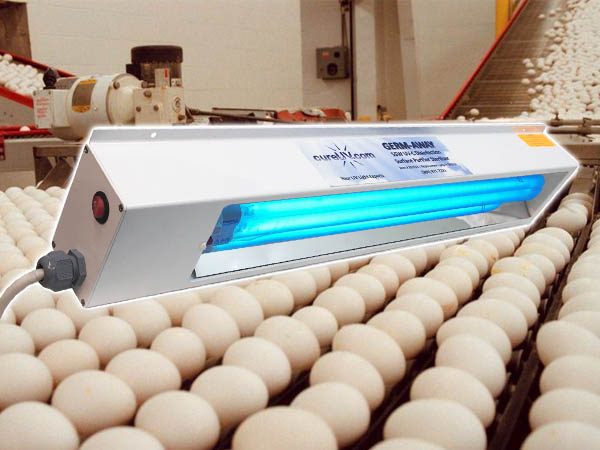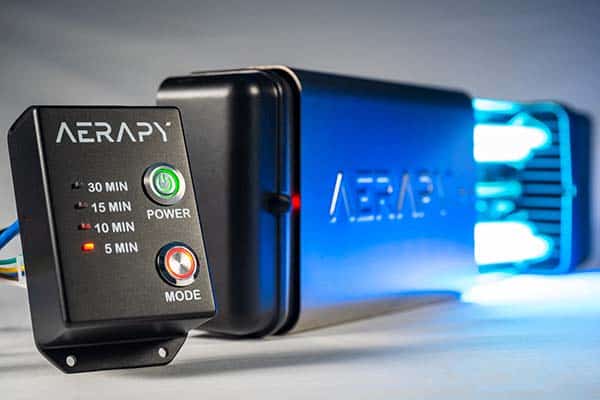Discovering UV Disinfection: A Vital Tool in the Battle Versus Dangerous Virus
As the globe deals with an ever-increasing risk from dangerous pathogens, the search for reliable techniques of disinfection has actually come to be an urgent priority. While traditional cleansing approaches have actually shown some success, there is a growing acknowledgment that we need to explore cutting-edge techniques to fight these invisible adversaries. One such technique that has actually garnered significant focus is UV disinfection. Harnessing the power of ultraviolet light, this modern technology has shown promising cause eliminating a wide range of pathogens. However just how does it function? What are the benefits? And where can it be applied? In this conversation, we will dive into the globe of UV disinfection, discovering its potential as an important device in the fight versus hazardous virus.
How Does UV Disinfection Job?
UV sanitation functions by using ultraviolet (UV) light to remove harmful microorganisms and stop their spread. This highly efficient approach involves using UV radiation to interrupt the DNA and RNA of microbes, making them unable to reproduce and creating their supreme damage.
When UV light is utilized for sanitation, it is commonly released from a lamp or bulb that generates a details wavelength of UV-C light. uv surface disinfection. This wavelength, varying from 200 to 280 nanometers, is specifically efficient at permeating the outer cell wall of bacteria, infections, and various other microbes. When inside the cell, the UV radiation targets and damages the genetic material, preventing the microorganism from recreating and creating infection
UV sanitation systems are developed to discharge the proper strength and duration of UV light to guarantee effective pathogen elimination. The dosage of UV light required for disinfection relies on aspects such as the type of microbe, its resistance to UV radiation, and the particular application. Additionally, the system needs to be carefully engineered to ensure proper exposure of the target microorganisms and to prevent any prospective harm to people or the atmosphere.
The Benefits of UV Sanitation
UV sanitation uses a wide range of benefits in effectively getting rid of unsafe virus and decreasing the danger of infection. Unlike typical disinfection approaches that rely on chemicals, UV disinfection makes use of ultraviolet light to damage the DNA and RNA of microorganisms, making them incapable to recreate and create infections.
Another considerable advantage of UV sanitation is its effectiveness in eliminating a variety of virus. UV light has actually been proven to efficiently get rid of microorganisms, infections, fungis, and protozoa, consisting of those that are immune to typical disinfectants. This broad-spectrum effectiveness makes UV disinfection a versatile tool in various settings, such as healthcare facilities, water treatment plants, and food processing markets.
Along with its efficiency, UV disinfection also uses quick sanitation cycles. Unlike other approaches that call for prolonged call times or repetitive applications, UV disinfection can accomplish considerable virus reduction in a matter of seconds. This reliable and fast procedure enables improved efficiency, decreased downtime, and enhanced general operational efficiency.
Furthermore, UV disinfection is a non-contact method, which means that it does not require straight physical call with the surface areas or objects being sanitized. This feature makes it suitable for use on delicate equipment and sensitive products that might be harmed or affected by other sanitation approaches.
Applications of UV Disinfection in Healthcare

UV disinfection is likewise made use of in the sanitation of medical tools and instruments (uv surface disinfection). The high intensity of UV light can successfully eliminate bacteria, viruses, and various other microbes, making certain that medical tools are risk-free and cost-free from contaminants. Furthermore, UV disinfection is utilized in water therapy systems within medical care centers. UV light is qualified of suspending damaging microorganisms, infections, and bloodsuckers, making the water secure for consumption and decreasing the danger of waterborne infections.
Additionally, UV disinfection technology is employed in the sanitation of medical care attires and individual safety equipment (PPE) By using UV light, healthcare specialists can make certain that their uniforms and PPE are devoid of pathogens, preventing the transmission of infections in between people and health care workers.
UV Disinfection in Public Spaces
Public rooms are significantly carrying out UV disinfection innovation as a vital procedure to fight the spread of dangerous microorganisms. With the ongoing global pandemic and the consistent hazard of infectious diseases, the need for effective sanitation methods in public areas has actually ended up being critical. UV disinfection supplies a reliable and reputable solution in this respect.

UV disinfection systems use ultraviolet light to shut off the DNA and RNA of bacteria, infections, and other pathogens. The use of UV sanitation innovation in public spaces not only aids in minimizing the risk of infection but additionally infuses self-confidence among the public concerning their security.
As public rooms remain to adapt to the difficulties postured by my link transmittable illness, UV sanitation technology plays an important function in making sure a tidy and risk-free atmosphere. By applying such actions, public areas can successfully reduce the spread of damaging pathogens and add to the general wellness of the community.
The Future of UV Sanitation Innovation
As the demand for boosted disinfection techniques remains to expand in action to the ongoing international pandemic and the continuous threat of transmittable illness, the future of UV disinfection modern technology holds appealing advancements in making certain a lot more reliable and efficient pathogen obliteration in different setups.

One location of development is the advancement of even more mobile and compact UV sanitation tools. These gadgets would certainly permit much easier and more flexible deployment in a range of settings, such as workplaces, colleges, and transport systems. Additionally, innovations in automation and robotics are being discovered to enhance the effectiveness and efficiency of UV sanitation procedures. This consists of the use of self-governing robotics furnished with UV-C lights to navigate and decontaminate big areas quickly and accurately.
Another location of exploration is the usage of UV disinfection in air filtration systems. By integrating UV-C lights right into HVAC systems, air-borne microorganisms can be successfully reduced the effects of, minimizing the danger of transmission in indoor environments.
Additionally, researchers are investigating the use of UV disinfection in food processing facilities to ensure the safety and top quality of food products. UV-C light has actually been discovered to check my source be reliable in eliminating foodborne microorganisms, offering a chemical-free option to traditional sanitation approaches.
Conclusion
In final thought, UV disinfection is an important tool in the fight against hazardous pathogens. With its capacity to give a chemical-free and environmentally friendly approach of sanitation, UV modern technology holds wonderful potential for the future.
UV sanitation systems are made to give off the suitable intensity and duration of UV light to ensure effective microorganism elimination. The dosage of UV light needed for sanitation depends on elements such as the kind of bacterium, its resistance to UV radiation, and the specific application. Unlike typical sanitation approaches that count on chemicals, UV sanitation makes use of ultraviolet light to damage the DNA and RNA of microbes, providing them not able to recreate and cause infections.In addition to its efficacy, UV disinfection likewise supplies fast sanitation cycles. One of the primary applications of UV disinfection in health care is in the disinfection of individual spaces and operating theaters.